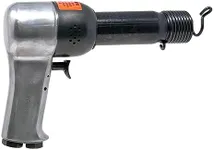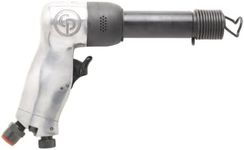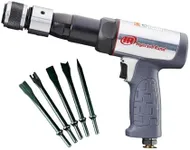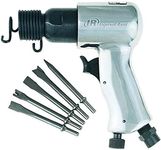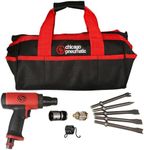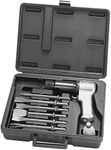Buying Guide for the Best Air Hammers
Choosing the right air hammer can make a big difference in how easily and effectively you can tackle tasks like cutting, chipping, or shaping metal and other materials. The best air hammer for you depends on what kind of projects you plan to use it for, how often you’ll use it, and your comfort with handling power tools. Understanding the key specifications will help you match the tool to your needs, ensuring you get a model that’s powerful enough for your jobs but still comfortable and safe to use.Blows Per Minute (BPM)Blows Per Minute (BPM) tells you how many times the air hammer strikes in a minute. This is important because a higher BPM means the tool can work faster and is better for lighter, quicker tasks like cutting sheet metal or removing tiles. Lower BPM models hit harder with each blow, making them better for heavy-duty jobs like breaking up concrete or thick metal. If you mostly do light work, a higher BPM is helpful, but for tougher jobs, look for a lower BPM with more impact force.
Stroke LengthStroke length is the distance the hammer travels with each blow. A longer stroke means each hit is more powerful, which is useful for heavy-duty tasks like chiseling or breaking up tough materials. Shorter strokes are better for precision and control, making them ideal for lighter work or when you need to avoid damaging surrounding areas. Think about the type of work you’ll do most often: choose a longer stroke for power, or a shorter stroke for control and finesse.
Air Consumption (CFM)Air Consumption, measured in Cubic Feet per Minute (CFM), tells you how much air the tool needs to operate. This is important because your air compressor must be able to supply enough air for the hammer to work properly. Lower CFM tools can run on smaller compressors, which is good for occasional or light use. Higher CFM tools need bigger compressors and are better for continuous or heavy-duty work. Check your compressor’s rating and match it to the air hammer’s requirements to avoid performance issues.
Chisel Shank SizeChisel shank size refers to the diameter of the chisel that fits into the air hammer. Common sizes are 0.401 inch and 0.498 inch. Smaller shank sizes are lighter and easier to handle, suitable for lighter tasks and more detailed work. Larger shank sizes are sturdier and can handle more force, making them better for heavy-duty jobs. Choose the size that matches the type of work you’ll do and make sure it’s compatible with the chisels you plan to use.
Tool Weight and ErgonomicsThe weight and design of the air hammer affect how comfortable it is to use, especially for long periods. Lighter tools are easier to handle and reduce fatigue, which is important for overhead or extended use. Heavier tools can be more stable and powerful but may be tiring to use for long stretches. Look for a tool with a comfortable grip and balanced weight that feels right in your hand, considering how long and how often you’ll be using it.
